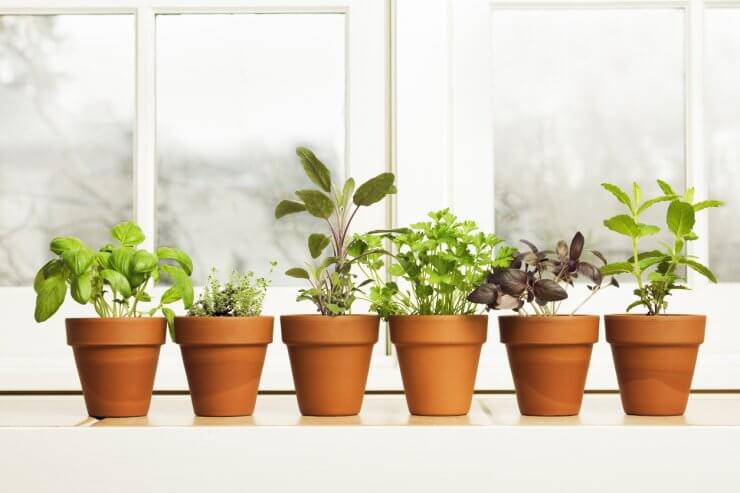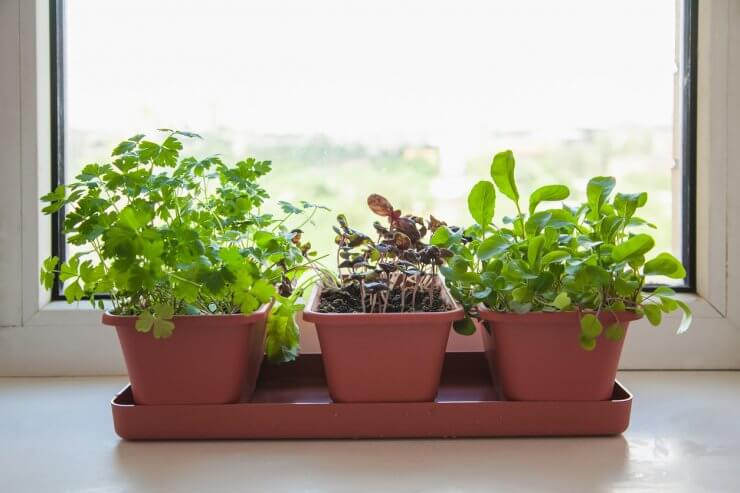
I’ll admit, I spent years wondering how to prevent moldy soil in my container gardens. At times it felt like a losing battle, and I’m sad to say that more than a few of my indoor plants suffered the consequences of my ignorance.
I still do a double-take when I see something fuzzy and white in my indoor container garden soil, although these days, that’s usually just some fur that my dog sheds.
But hey, just because a few of my plants were ruined by moldy soil doesn’t mean you have to go through that. Here is some of what I learned about how to prevent moldy soil in a container garden.
Discover 7 top tips for growing, harvesting, and enjoying tomatoes from your home garden—when you access the FREE guide The Best Way to Grow Tomatoes, right now!

How to prevent moldy soil: 5 ways to keep your container garden healthy
First things first. I fibbed a little at the beginning of this post. It’s not usually the mold that harms a plant. More accurately, the conditions that allow mold to thrive also tend to be not great for plants. Damp soil, stagnant air, and minimal sunlight are great for mold, but it’s a recipe for disaster for your plants.
That’s the place to begin in thinking about how to prevent moldy soil. If you see mold, it’s likely a symptom that your container garden needs some attention.
For me, it was often the combination of poor drainage and overwatering. I have learned my lesson there. Container gardens can be tricky when it comes to watering, since there are a variety of container materials, some of which dry out quickly while others barely drain. So that’s the first way to prevent mold, and thus other issues like root rot.
1. Pay attention to how wet your soil is. One simple way to do this is to dig your finger into the soil about an inch or so to see if it’s moist. Even when the soil seems dry at the surface, it may still have plenty of moisture closer to the plant’s roots.
2. Skip those glamorous decorative pots. This gets to the drainage aspect of how to prevent moldy soil. Many of those gorgeously painted and glazed pots don’t have drainage holes. Like, the entire gardening world has “well-drained soil” tattooed on their brains, but somehow there is still a market for pots with no drainage holes. And yes, I’ve bought my fair share of these, but now I always make it a point to look closely before getting too excited about a pot.
3. Maintain good air circulation. Especially in winter when all the windows are closed, that indoor herb garden isn’t getting the breeze that helps keeps leaves dry. You can either move your container garden to a different location with more airflow or run a small fan near your plants for a couple of hours a day.
4. Keep the soil clean. What does that mean? It just means that it’s important to pick up any dead leaves or other material that could begin to rot.
5. Let there be light. Sunlight is perhaps the easiest way to prevent moldy soil. Ensure that not only your plants but also the soil get plenty of sunshine. Remember, mold likes it dark and damp. Sunlight is the opposite of that.
What to do if you have moldy soil
It wouldn’t be fair to talk about how to prevent moldy soil without sharing some ideas about treating it. Luckily, the solution is pretty straightforward. Simply remove the moldy soil and spread cinnamon around the base of the plant. Next, clean the leaves with mild soap and water to remove any mold spores that may be hiding there.
Remember, though, it’s not necessarily the mold that harms your plants – it’s the conditions that allow mold to grow. So once you’ve removed the mold, go back to the five steps above.
And if you can, try to give your container garden some outside time. A little sunshine and fresh air go a long way for keeping plants (and humans!) healthy and happy.
What steps have you taken to eliminate and prevent moldy soil in your container garden?
Discover 7 top tips for growing, harvesting, and enjoying tomatoes from your home garden—when you access the FREE guide The Best Way to Grow Tomatoes, right now!





How does the cinnamon help?
Cinnamon contains compounds that have been shown to be an effective fungicide